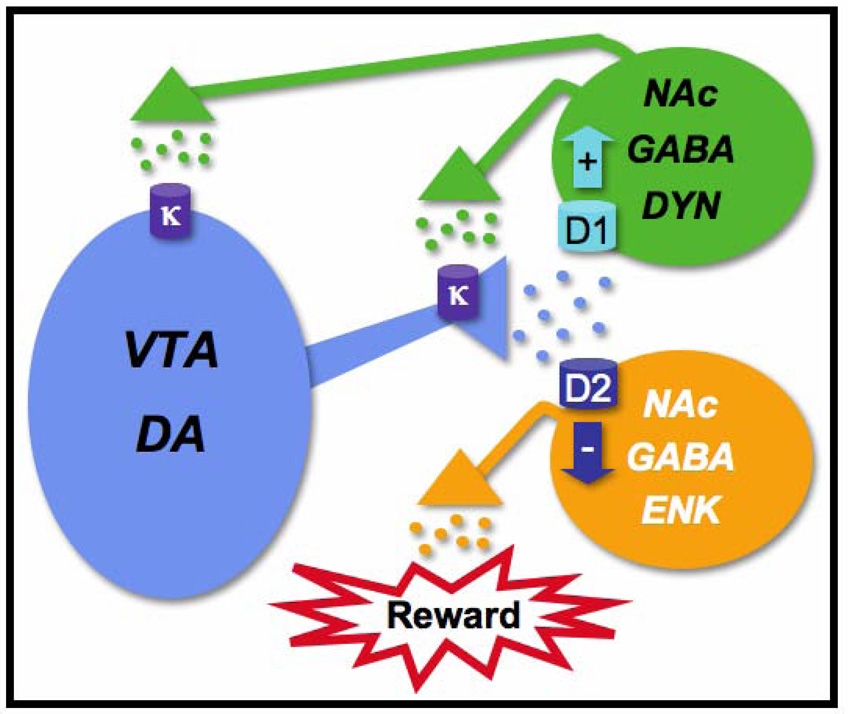Fig.1.
A highly simplified hypothetical scheme by which kappa-opioid receptors (KORs) in the mesolimbic system might regulate mood. Dopamine (DA) neurons (blue) originating in the ventral tegmental area (VTA) project to the nucleus accumbens (NAc). Within the NAc, DA acts upon two populations of medium spiny (GABAergic) neurons. One type of neuron expresses dopamine D2 receptors and enkephalin (ENK). These neurons (orange) normally inhibit reward; DA binding at D2 receptors activates inhibitory G-proteins (Gi) and decreases the activity of these neurons, which enables reward via processes that might involve outputs to other regions (e.g., ventral pallidum). The other type of neuron expresses dopamine D1 receptors and dynorphin (DYN). These neurons (green) provide feedback regulation of the VTA; DA binding at D1 receptors activates stimulatory G-proteins (Gs) and increases the activity of these neurons. Subsequent increases in DYN-induced stimulation of Gi-coupled KORs would tend to decrease the activity of VTA DA neurons. One consequence of this effect would be reduced D2 receptor function and increased inhibition of reward, causing hallmark signs of depression (e.g., anhedonia, dysphoria). According to this scheme, administration of KOR agonists would produce signs of depression by causing acute reductions in the activity of VTA neurons, whereas exposure to stress and drugs of abuse lead to CREB-regulated increases in DYN expression and more persistent behavioral effects. KOR antagonists might normalize the function of VTA neurons by preventing overstimulation of KORs, thereby producing antidepressant effects. For additional detail, see Carlezon and Thomas (2009).

